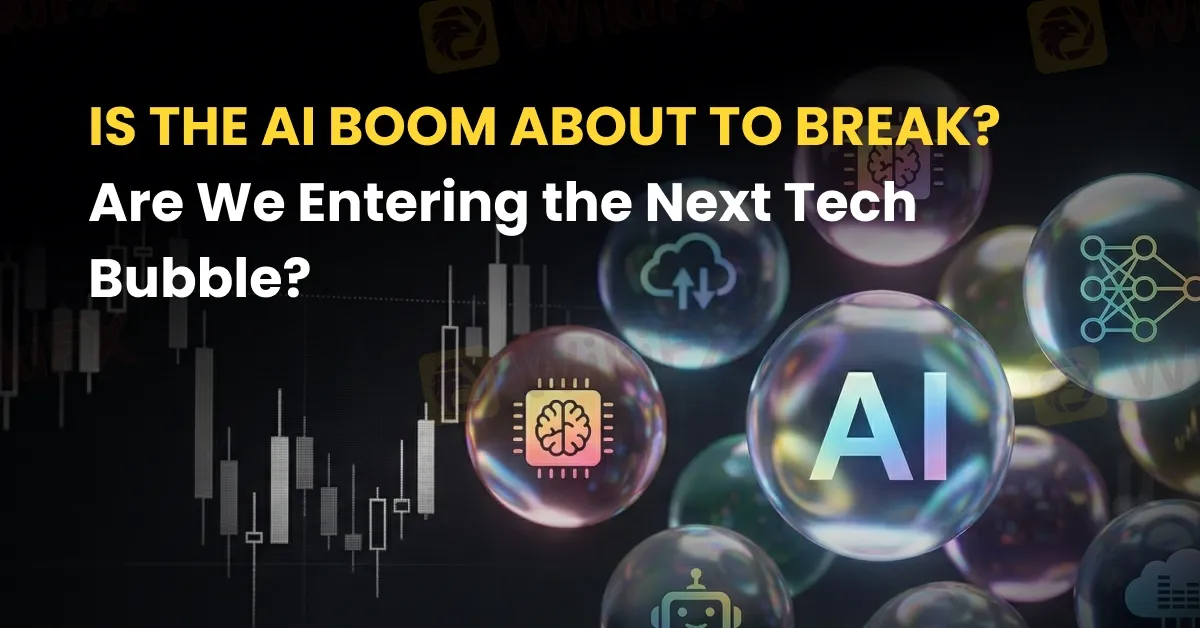简体中文
繁體中文
English
Pусский
日本語
ภาษาไทย
Tiếng Việt
Bahasa Indonesia
Español
हिन्दी
Filippiiniläinen
Français
Deutsch
Português
Türkçe
한국어
العربية
Is the AI Boom About to Break? Are We Entering the Next Tech Bubble?
Abstract:Tumbling tech markets across Asia suggest the AI frenzy may be nearing a breaking point, raising urgent questions about whether history is repeating itself.

Technology markets across Asia experienced a sharp selloff on Friday, raising urgent questions about whether the global rush into artificial intelligence is beginning to show signs of strain.
The downturn followed a disappointing session in the United States, where softer employment data dampened expectations of further interest rate cuts. Investors also appeared increasingly uneasy about the lofty valuations attached to companies positioned at the centre of the AI revolution. Seoul‘s Kospi index fell nearly 4 per cent, Tokyo’s Nikkei dropped more than 2 per cent, while Malaysias Bursa index declined 3.38 points to 1,616.72 as market sentiment turned negative.
This market reversal showed a drastic contrast to the optimism of the previous day, when a strong earnings report from Nvidia triggered a region-wide rally. The firm continues to serve as a global bellwether for AI demand. Its chief executive had recently dismissed suggestions that the industry was entering bubble territory. Nvidia briefly became the first company in history to surpass a valuation of 5 trillion US dollars, though its market capitalisation has since eased to around 4.4 trillion US dollars.
The enormous sums flowing into artificial intelligence remain a central driver of market enthusiasm. Research firm Gartner estimates that global AI-related spending could reach 1.5 trillion US dollars by 2025 and exceed 2 trillion US dollars in 2026. This investment wave is being accelerated by geopolitical competition, as countries race to build data centres equipped with vast numbers of advanced chips that demand extraordinary power and cooling capacity.
Among the steepest declines on Friday was Japans SoftBank Group, which fell more than 10 per cent during early trading. SoftBank is a major supporter of OpenAI and is involved in a 500 billion US dollar project known as Stargate, a large scale AI infrastructure initiative launched in the United States earlier this year. Market strategists suggested the selloff did not stem from a single event, but rather from a collective loss of confidence as initial optimism around Nvidia faded within hours.
The events have revived debate about whether the world is witnessing the early stages of a modern tech bubble. A technology bubble occurs when speculation pushes valuations far beyond what traditional financial metrics justify. These bubbles often form late in credit cycles, when excess capital seeks rapid returns in markets driven more by expectations than fundamentals. During such periods, investors may embrace unconventional valuation methods and overlook weak business models.
History offers several cautionary examples. The dotcom bubble of the late 1990s burst when revenue at major telecom suppliers began falling sharply, triggering a chain reaction that pushed the global economy into recession in 2001. More recently, Bitcoins meteoric rise from 2013 to 2017 displayed similar features, with speculative enthusiasm driving prices dramatically higher before collapsing.
The current surge in AI investment may well create transformative long-term value, but the recent market turbulence demonstrates how fragile sentiment can become when valuations reach extreme levels. Whether this marks the beginning of a broader correction or merely a pause in a powerful trend remains one of the most pressing questions facing global markets today.
Disclaimer:
The views in this article only represent the author's personal views, and do not constitute investment advice on this platform. This platform does not guarantee the accuracy, completeness and timeliness of the information in the article, and will not be liable for any loss caused by the use of or reliance on the information in the article.
WikiFX Broker
Latest News
Interactive Brokers Expands Access to Taipei Exchange
Simulated Trading Competition Experience Sharing
WinproFx Regulation: A Complete Guide to Its Licensing and Safety for Traders
Axi Review: A Data-Driven Analysis for Experienced Traders
INZO Regulation and Risk Assessment: A Data-Driven Analysis for Traders
Pepperstone CEO: “Taking Down Scam Sites Almost Every Day” Becomes “Depressing Daily Business”
The CMIA Capital Partners Scam That Cost a Remisier Almost Half a Million
Is Seaprimecapitals Regulated? A Complete Look at Its Safety and How It Works
eToro Cash ISA Launch Shakes UK Savings Market
Cleveland Fed's Hammack supports keeping rates around current 'barely restrictive' level
Currency Calculator



